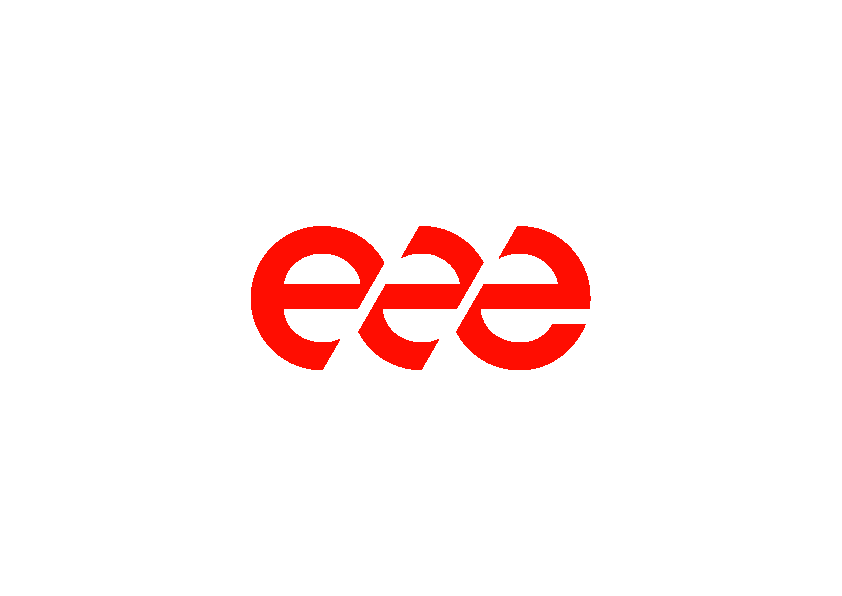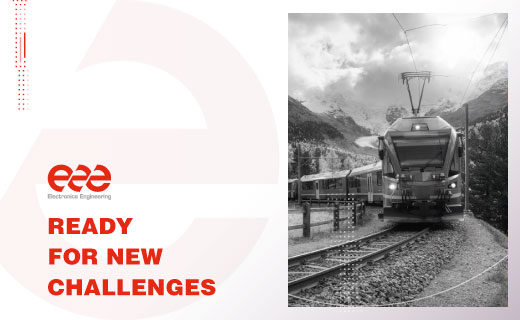With more than 40 years of experience in electronic engineering dedicated to railway safety, Triple E has developed a strategic plan that has doubled business in the past five years, with a strong commitment to innovation and an eye on sectors beyond rail. In this interview, our General Manager, Julián Romasanta, shares his vision on key aspects such as the future of railway safety, the evolution of SIL2 systems, the role of artificial intelligence in risk prevention, the company’s international expansion, and its entry into industries such as maritime and energy. A conversation that highlights how our expertise transcends borders and industries, with innovation and safety at the core.
Introduction and Context
– How would you describe Triple E’s current position in the railway sector?
– We are fully focused and committed to the railway sector. Not only because of nearly 30 years of experience as integrators of electronic safety systems, but also because of a strong and decisive commitment made in 2021, when we launched our strategic plan to consolidate ourselves as key suppliers in a leading transport sector and carried out the necessary investments and restructuring.
– How do you evaluate the last few years in terms of growth, innovation, and leadership?
– We are very proud of a team that has positioned Triple E as a key supplier of solutions for the railway ecosystem. Only with a committed team can you double business volume in five years. Our engineers were able to anticipate what was coming: fleet renewals, digitalization, ensuring passenger safety, and facing new cybersecurity threats.
Future Vision in the Railway Sector: SIL2 Systems and AI
– What challenges will define the future of railway safety in the next 5 -10 years?
– In the medium term, we must ensure a balance between growth, digitalization, and prevention. For this, we work on scalable solutions capable of interacting with multiple systems while remaining completely secure against new vulnerabilities. We remain focused on software developments with extremely high reliability standards. AI opens up unprecedented predictive capabilities, enabling us not only to mitigate incidents but to prevent them.
– Triple E is recognized for its expertise in SIL2 systems. How will this field continue to evolve?
– After years of intense work and investment, we now offer 360° SIL2 solutions. We cover everything from detection to suppression, using whichever method the client requires. Our focus now is to integrate SIL2 communications with other train systems, thereby contributing to a completely secure environment beyond our own solution.
– Where do you see the greatest potential for innovation in electronic railway safety?
– In harnessing the full capabilities AI offers for safety. Experts tell us that the best way to mitigate an incident is to prevent it from happening. The level of sensorization and analysis that AI provides gives us tools we never had before. Advanced electronics will help exponentially scale cybersecurity across the industry and enable multiple systems to work together against any type of risk.
Expanding into New Sectors
– Triple E has always been linked to rail, but now you talk about expanding into other industries. What led to this strategic move?
– More than being linked to rail, I’d say Triple E has always been tied to safety. It’s in the team’s DNA. Forty-five years ago, we protected buildings with analog technology. With the arrival of new investors and today’s digital development, we felt we had the capacity to export this expertise and replicate solutions as demanding as those required by railway transport.
– Why are industries such as maritime or energy natural areas to apply Triple E’s expertise?
– We see many similarities that make them suitable: they are hostile environments for electronics (temperature, humidity, salt exposure…) where we’ve already proven our capabilities. Safety without human dependence is vital to protect lives and assets. Sensorization and reliability perfectly apply to safeguarding areas without direct human intervention.
– What railway learnings are most valuable in solving challenges in these sectors?
– The strict regulations Europe applies to ensure railway safety and system reliability are among the most demanding in the civil industry. If a fire cannot be prevented, immediate action is essential. Unfortunately, we’ve seen the consequences of uncontrolled fires this summer or power grid failures. Reliability in such critical scenarios is key.
– What is your value proposition for a client outside the railway world who doesn’t know you yet?
– The methodology and end-to-end solutions demanded by SIL2 certification are fully exportable to any sector requiring electronic safety.
Active Listening and Co-Creation
– You’ve mentioned that your approach is to listen to clients from other industries to adapt solutions. Can you give an example of how a client need has turned into an innovative solution?
– One of the qualities our clients value most about Triple E is our ability to adapt solutions to the many requirements of each project: technical specifications, local regulations, service needs… We noticed that clients appreciate turnkey “plug & play” solutions, so we designed racks with the entire suppression system assembled, delivered as a single unit the client just connects and it’s ready to operate.
– What message would you send to companies in these industries that don’t yet know Triple E?
– Challenge us. Almost 30 years ago we protected our first train. Today, 7,000 vehicles use Triple E technology, and we are present on five continents.
– How do you maintain the balance between innovation and guaranteed safety, which is your hallmark?
– Through investment in R&D and a strict quality and reliability protocol that ensures all solutions reaching the market have passed an extremely rigorous battery of internal tests. We are proud of both the development teams and the professionals validating and verifying the solutions we want to implement.
International Expansion
– Triple E is already present in India, Brazil, Australia… What have you learned from this expansion?
– International experience always enriches. In our case, it forces us to adapt to local regulations and cultural practices, which in turn improve the solutions we offer. Clients particularly value our consultative sales approach.
– How do you manage collaboration with local partners in strategic countries?
– The hardest part is finding a partner that fits Triple E culturally—specifically in terms of business culture. We want the end client to always feel we are their partner, working together to find the best solution for each project. We’re not interested in low-value volume; we want partners who understand that our role is to let manufacturers focus on other technological aspects, trusting that we will always stand by their side.
– What markets do you consider priorities in the near future?
– While maintaining leadership in Spain, Portugal, and Latin America, we want to work with more manufacturers in Europe. We are very active in India, a country where we have a strong focus: it has a long railway tradition, the government has allocated significant budgets for modernization, and they are regulating with high safety standards. Morocco, with which we have a strong commercial history, is also a very interesting country.
– How does internationalization impact your internal corporate culture?
– Greatly. As I said, internationalization enriches us. I enjoy seeing my team support clients in countries as diverse as Saudi Arabia, Australia, and Egypt. It broadens their minds and they always bring back new ideas for the future.
Sustainability and Social Responsibility
– What does sustainability mean to Triple E in a sector like rail?
– We are very committed to sustainability. We know we help industries that directly contribute to reducing emissions and supporting the planet’s future. We actively participate in the UN Global Compact and hold environmental certifications that prove this commitment.
– How do you contribute to making trains more efficient and environmentally friendly?
– Very actively. First, by preventing incidents, we avoid emissions derived from energy waste. We use highly efficient low-consumption technology and efficient practices. Our equipment complies with all international environmental standards. Our solutions are free from planned obsolescence, and we minimize electronic waste as much as possible.
Ultimately, Triple E’s track record and vision demonstrate that safety and innovation are not destinations, but an ongoing journey of improvement. A team that combines expertise, technology, and active listening to deliver solutions adapted to every environment and need. If you’re looking for a partner capable of designing and supporting electronic safety engineering projects with maximum reliability, we are ready to analyze your system and find the best solution.










